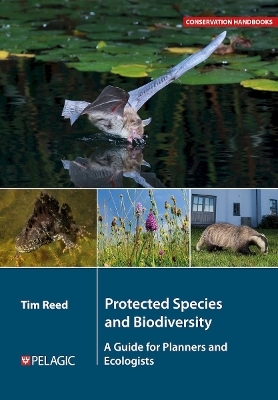
Protected Species and Biodiversity
Pelagic Publishing (Verlag)
978-1-78427-502-0 (ISBN)
This book provides a single source of guidance on the protected-species survey data that accompany planning applications. Comprehensive and clear, it is an essential reference for planners and ecological consultants.
New development proposals potentially affect protected species on a daily basis. For the first time, this guide brings together in one place all the key elements needed to collect and interpret survey data for protected species and therefore help determine planning applications. By working through individual species and group tables, even the least experienced planner can begin critically to evaluate the often-variable material provided by ecologists in planning submissions.
Chapters cover: the planning system and biodiversity; government guidance and its interpretation; how to secure better quality data; the most recent standing advice; detailed notes on protected species; drawing in data from other surveys, and biodiversity net gain. Packed with information, the book also codifies what a planner expects from ecologists, so that both target audiences are able to work better together, and thus more effectively help safeguard protected species.
Tim Reed has had a lifelong interest in data quality and survey methods as the basis for credible decision-making by those that influence landscapes and protected areas. This has included developing survey methods for waders on moorland and machair, standardising nature reserve management plan formats, chairing development groups for national-level databases, and collaborating with the EU on data standards for Directives. His last 20 years have been spent helping major corporates establish biodiversity as part of their risk-management processes around the world, and working at public inquiries in the UK.
Introduction
A green and pleasant land?
Why do LPAs need help with protected species when evaluating planning applications?
How to use this book
1. The Planning System, Protected Species and Biodiversity
1.1 The policy needs for biodiversity evaluation
1.2 What do LPAs say they want?
1.3 ALGE, ecology and planning
2. Guidance and Interpretation
2.1 NE guidance 2014–21
2.2 NED guidance 2022
2.3 The Partnership for Biodiversity in Planning
3. Getting Better Data to Planners: Consultants, Data Quality, and Constructing More Suitable Guidance
3.1 The British biodiversity standard BS 42020
4. The New 2022 Standing Advice: Turning Around and Moving Forwards
4.1 Establishing the facts
4.2 What does an LPA need to have?
4.3 What does the January 2022 SA expect of an LPA?
4.4 Moving forwards from the 2022 SA in 11 steps
5. Surveys for Protected Species: What the LPA Might Have Ordered
5.1 Headings: what to expect and why
5.2 Progressing
5.3 Protected species guidance for planners in tables
6. Using the Data from Effective Protected Species and Other Surveys
6.1 Biodiversity Net Gain and species
6.2 Testing BNG
6.3 Delivering protected species into the future
Appendix: Key elements for each species/species group
References and further reading
Index
| Erscheinungsdatum | 20.12.2024 |
|---|---|
| Reihe/Serie | Conservation Handbooks |
| Verlagsort | Exeter |
| Sprache | englisch |
| Maße | 170 x 244 mm |
| Gewicht | 468 g |
| Themenwelt | Naturwissenschaften ► Biologie ► Ökologie / Naturschutz |
| ISBN-10 | 1-78427-502-6 / 1784275026 |
| ISBN-13 | 978-1-78427-502-0 / 9781784275020 |
| Zustand | Neuware |
| Informationen gemäß Produktsicherheitsverordnung (GPSR) | |
| Haben Sie eine Frage zum Produkt? |
aus dem Bereich


